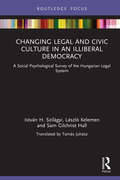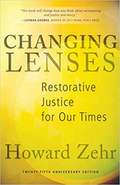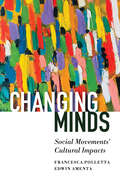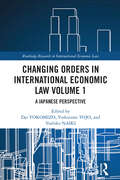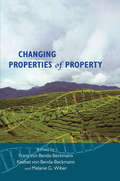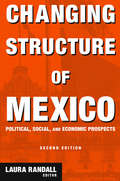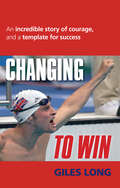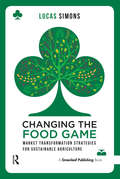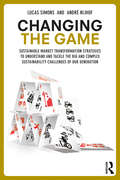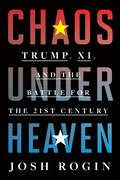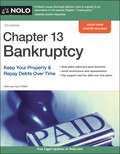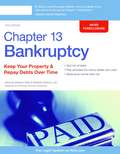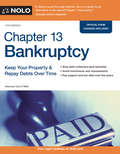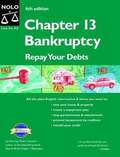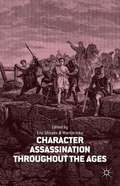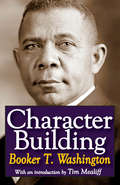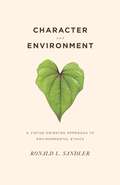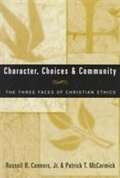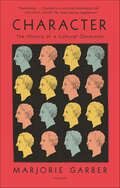- Table View
- List View
Changing Legal and Civic Culture in an Illiberal Democracy: A Social Psychological Survey of the Hungarian Legal System
by István H. Szilágyi László Kelemen Sam Gilchrist HallChanging Legal and Civic Culture in an Illiberal Democracy is a unique empirical study on recent developments in legal and civic consciousness in Hungary. Drawing its methodology from social psychology, this book illuminates a shift in legal consciousness during the time in which Orbán’s government has cemented Hungary’s reputation as an illiberal democracy. The book foregrounds the voices of the Hungarian population in how they view the shift towards increasingly right-wing politics and an erosion of the rule of law. It opens with an extensive theoretical introduction of the historical development and psychological dimensions of legal consciousness in Hungary and relates the Hungarian research to international developments. It then presents its empirical results and offers a jargon-free account of ordinary people’s changing perceptions of their relationship to Hungary’s civic and legal cultures, before finally examining the correlations between surveys. Methodologically, the book establishes that theories of legal consciousness and social change are bolstered by empirical data. Offering a new way of approaching shifts in legal consciousness and the rule of law in Balkan and Eastern European countries, this text will be of great interest to researchers and students of social psychology, law, international relations and Central European studies.
Changing Lenses: Restorative Justice for Our Times
by Howard ZehrDoes the criminal justice system actually help victims and offenders? What does justice look like for those who have been harmed? For those who have done harm? Twenty-five years after it was first published, Changing Lenses by Howard Zehr remains the classic text of the restorative justice field. <P><P> Now with valuable author updates on the changing landscape of restorative justice and a new section of resources for practitioners and teachers, Changing Lenses offers a framework for understanding crime, injury, accountability, and healing from a restorative perspective. Uncovering widespread assumptions about crime, the courts, retributive justice, and the legal process, Changing Lenses offers provocative new paradigms and proven alternatives for public policy and judicial reform.
Changing Minds: Social Movements’ Cultural Impacts
by Edwin Amenta Francesca PollettaSocial movements—organized efforts by relatively powerless people to change society—can result in legal and policy changes, such as laws protecting same-sex marriage and tax rebates for solar energy. However, movements also change people’s beliefs, values, and everyday behavior. Such changes may help bring about new policies or take place in the absence of new policy, yet we still know little about when and why they occur. In Changing Minds, sociologists Francesca Polletta and Edwin Amenta ask why movements have sometimes had fast and far-reaching cultural influence. Polletta and Amenta examine the trajectories of U.S. social movements, including the old-age pension movements of the 1930s and 1940s, the Black rights movement of the 1950s and 1960s, the women’s movement of the 1970s, right-wing movements in the 1980s and 1990s, and the environmental movement up to the present, to determine when, why, and how social movements change culture. They find that influential movements are featured in the news, but not only in the news. Movement perspectives may appear also in opinion and commentary outlets, on television talk shows and dramas, in movies, stand-up comedy, and viral memes. Popular culture producers remake movement messages as they transmit them, sometimes in ways that make those messages compelling. For example, while the news largely ignored feminists’ challenge to inequality in the home, popular cultural outlets turned “liberation” into a resonant demand for women’s right to self-fulfillment outside the home and within it. Widespread attention to the movement may lead people to change their minds individually. But more substantial change is likely when companies, schools, and other organizations outside government strive to get out in front of a newly legitimate issue, whether environmental sustainability or racial equity, by adopting movement-supportive norms and practices. Eventually, ideas associated with a movement may become a new common sense—though not always the ideas that the movement intended. Throughout Changing Minds, Polletta and Amenta provide activists with strategies for getting their message heard and acted on. They suggest how movement actors can get into the news as political players or experts rather than lawbreakers or zealots. They show when it makes sense for activists to work with popular cultural producers and when they should create their own cultural outlets. They explain why the routes to cultural influence have changed and why urging people to take one easy step to save the planet can do more harm than good. Changing Minds is a fascinating exploration of why and how some social movements have caused profound shifts in society.
Changing Orders in International Economic Law Volume 1: A Japanese Perspective (Routledge Research in International Economic Law)
by Dai Yokomizo Yoshizumi Tojo Yoshiko NaikiThese two groundbreaking volumes look at complex legal issues in the changing global economy from the perspective of Asia and/or Japan. Contributors scrutinize the past, present, and future and discuss what the global legal order in economic fields could be like by navigating uncertain and turbulent times. The books address six main themes: (1) Polarization and diversification of values, progress of regionalism and restructuring of multilateral rules, (2) Full-scale arrival of the digital economy and its impact, (3) Empowerment of private persons/entities, (4) Reconsideration of the concept of “territorial jurisdiction”, (5) Law of national security and rule in emergency situations, and (6) Values of Sustainable Development Goals (SDGs) in trade and investment liberalization rules. The book also examines various legal problems under the COVID-19 crisis and suggests how the post COVID-19 global economic order will be from the perspective of Asia and/or Japan. This comprehensive insight will shed light on the intertwined and complex phenomena of the world economy and allow readers of business law and international law to have a better understanding of this volatile era.
Changing Orders in International Economic Law Volume 2: A Japanese Perspective (Routledge Research in International Economic Law)
by Dai Yokomizo Yoshizumi Tojo Yoshiko NaikiThese two groundbreaking volumes look at complex legal issues in the changing global economy from the perspective of Asia and/or Japan. Contributors scrutinize the past, present, and future and discuss what the global legal order in economic fields could be like by navigating uncertain and turbulent times. The books address six main themes: (1) Polarization and diversification of values, progress of regionalism and restructuring of multilateral rules, (2) Full-scale arrival of the digital economy and its impact, (3) Empowerment of private persons/entities, (4) Reconsideration of the concept of “territorial jurisdiction”, (5) Law of national security and rule in emergency situations, and (6) Values of Sustainable Development Goals (SDGs) in trade and investment liberalization rules. The books also examine various legal problems under the COVID-19 crisis and suggest how the post-COVID-19 global economic order will be from the perspective of Asia and/or Japan. This comprehensive insight will shed light on the intertwined and complex phenomena of world economy and allow readers of business law and international law to have a better understanding of this volatile era.
Changing Properties Of Property
by Franz von Benda-Beckmann Keebet von Benda-Beckmann Melanie WiberAs an important contribution to debates on property theory and the role of law in creating, disputing, defining and refining property rights, this volume provides new theoretical material on property systems, as well as new empirically grounded case studies of the dynamics of property transformations. The property claimants discussed in these papers represent a diverse range of actors, including post-socialist states and their citizens, those receiving restitution for past property losses in Africa, Southeast Asia and in eastern Europe, collectives, corporate and individual actors. The volume thus provides a comprehensive anthropological analysis not only of property structures and ideologies, but also of property (and its politics) in action.
Changing Structure of Mexico: Political, Social and Economic Prospects (Columbia University Seminars Ser.)
by Laura RandallMexico is reinventing itself. It is moving toward a more tolerant, global, market oriented, and democratic society. This new edition of "Changing Structure of Mexico" is a comprehensive and up-to-date presentation of Mexico's political, social, and economic issues. All chapters have been rewritten by noted Mexican scholars and practitioners to provide a lucid and informative introductory reader on Mexico. The book covers such topics as Mexico's foreign economic policy and NAFTA; maquiladoras; technology policy; and Asian competition; as well as domestic economics such as banking, tax reform, and oil/energy policy; the environment; population and migration policy; the changing structure of political parties; and values and changes affecting women.
Changing To Win: An incredible story of courage and a template for success
by Giles LongIn CHANGING TO WIN, Giles Long MBE, eight times Paralympic Gold medal winner, world record breaker, and cancer survivor, shares his revolutionary model for success. His innovative CHIMO cycle method, based on the principles he has followed throughout his life, reveals how a careful balance of motivation and inspiration can lead to extraordinary changes in performance and accomplishments, both on an individual and team level. Illustrated by the author's own incredible tale of courage, perseverance, and Paralympic glory, and drawing on his experience as a successful motivational speaker, CHANGING TO WIN provides a template for achievement in life and in the workplace.
Changing the Food Game: Market Transformation Strategies for Sustainable Agriculture
by Lucas SimonsBy 2050, the world’s population is estimated to grow to 10 billion. To feed everyone, we will have to double our food production, to produce more food in the next 40 years than in the whole of the last 6,000. Changing the Food Game shows how our unsustainable food production system cannot support this growth. In this prescient book, Lucas Simons argues that the biggest challenge for our generation can only be solved by effective market transformation to achieve sustainable agriculture and food production. Lucas Simons explains clearly how we have created a production and trading system that is inherently unsustainable. But he also demonstrates that we have reason to be hopeful – from a sustainability race in the cocoa industry to examples of market transformation taking place in palm oil, timber, and sugarcane production. He also poses the question: where next? Provocative and eye-opening, Changing the Food Game uncovers the real story of how our food makes it on to our plates and presents a game-changing solution to revolutionize the industry.
Changing the Game: Sustainable Market Transformation Strategies to Understand and Tackle the Big and Complex Sustainability Challenges of Our Generation
by Lucas Simons Andre NijhofWe are at the beginning of the sustainability era. The biggest challenge of our generation is to reach the Sustainable Development Goals. For this we must be willing to understand and change the root causes that create these challenges in the first place. The system itself needs to change. But how to do that? This ground-breaking book Changing the Game reveals the missing insights and strategies to actually achieve system change. The authors Lucas Simons and André Nijhof bring decades of real life and academic experience, and state that most of the sustainability challenges are actually caused by the same system failures, every time. Therefore, the way to accelerate and manage system change is also similar every time – if you know where to look and how to act. The theory of sustainable market transformation and system change is described in a compelling and easy to understand eight-step approach applied to eight different sectors. The authors, together with respected sector experts, describe the drivers, triggers and dominant thinking in each of these sectors as well as the strategies needed to move towards higher levels of sustainability. This book is highly accessible and engaging, and is perfect for use by professionals, leaders and students for understanding how to move markets to a more sustainable future.
Changing to Win: An Incredible Story of Courage and a Template for Success
by Giles LongIn CHANGING TO WIN, Giles Long MBE, eight times Paralympic Gold medal winner, world record breaker, and cancer survivor, shares his revolutionary model for success. His innovative CHIMO cycle method, based on the principles he has followed throughout his life, reveals how a careful balance of motivation and inspiration can lead to extraordinary changes in performance and accomplishments, both on an individual and team level. Illustrated by the author's own incredible tale of courage, perseverance, and Paralympic glory, and drawing on his experience as a successful motivational speaker, CHANGING TO WIN provides a template for achievement in life and in the workplace.
Chaos Under Heaven: Trump, Xi, and the Battle for the 21st Century
by Josh RoginThe explosive, behind-the-scenes story of Donald Trump&’s high-stakes confrontation with Beijing, from an award-winning Washington Post columnist and peerless observer of the U.S.–China relationship There was no calm before the storm. Donald Trump&’s surprise electoral victory shattered the fragile understanding between Washington and Beijing, putting the most important relationship of the twenty-first century in the hands of a novice who had bitterly attacked China from the campaign trail. Almost as soon as he entered office, Trump brought to a boil the long-simmering rivalry between the two countries, while also striking up a &“friendship&” with Chinese president Xi Jinping — whose manipulations of his American counterpart would undermine the White House&’s already disjointed response to the historic challenge of a rising China. All the while, Trump&’s own officials fought to steer U.S. policy from within. By the time the COVID-19 pandemic erupted in Wuhan, Trump&’s love-hate relationship with Xi had sparked a trade war, while Xi&’s aggression had pushed the world to the brink of a new Cold War. But their quarrel had also forced a long-overdue reckoning within the United States over China&’s audacious foreign-influence operations, horrific human rights abuses, and creeping digital despotism. Ironically, this awakening was one of the biggest foreign-policy victories of Trump&’s fractious term in office. Filled with shocking revelations drawn from Josh Rogin&’s unparalleled access to top U.S. officials from the White House and deep within the country&’s foreign policy machine, Chaos Under Heaven reveals an administration at war with itself during perhaps our most urgent hour.
Chapter 13 Bankruptcy: Keep Your Property & Repay Debts Over Time
by Cara O'NeillStop creditors. Get more time to pay. Chapter 13 bankruptcy offers unique debt solutions not available in Chapter 7 bankruptcy. Yes, you’ll pay into a repayment plan. But your money will go toward the debts that matter most—like your mortgage, car loan, support obligations, and taxes. Remaining debts, such as credit card balances, medical bills, and utility bills, usually get only a fraction of what you owe. Some of Chapter 13 bankruptcy’s other features include allowing filers to: keep all property avoid foreclosure and vehicle repossession pay the fair market value for a car, and stop lawsuits, wage garnishments, and bank levies. Here, you’ll find clear explanations of the Chapter 13 process to help you: decide if Chapter 13 is your best option estimate your monthly plan payment, and find and work effectively with the right lawyer. This revised edition covers all the latest changes in bankruptcy law, including updated exemption tables for every state, and explains how to use the new official bankruptcy forms.
Chapter 13 Bankruptcy: Keep Your Property & Repay Debts Over Time
by Stephen Elias Patricia DzikowskiWhen you file for Chapter 13 bankruptcy, you can wipe out some of your debt and pay off the rest over time with a repayment plan approved by the bankruptcy court. You may be able to: avoid foreclosure stop car repossession reduce car loan debt stop most debt collectors, and remove junior liens from your home Here, you'll find clear explanations of the Chapter 13 process and worksheets to help you: consider alternatives to bankruptcy decide if Chapter 13 is your best option determine if you qualify for Chapter 13 estimate your monthly plan repayment find and work effectively with an excellent lawyer, and rebuild your credit after bankruptcy This revised edition includes all the latest changes in bankruptcy law, including updated 50-state exemption tables, and important U.S. Supreme Court decisions. If you are considering or have decided to file Chapter 13 bankruptcy, Nolo's Chapter 13 Bankruptcy is the essential guide you need to understand the procedures and law. Please note: This book does not cover business bankruptcies, farm reorganizations, or Chapter 7 personal bankruptcy. For Chapter 7 bankruptcy, see Nolo's How to File for Chapter 7 Bankruptcy.
Chapter 13 Bankruptcy: Keep Your Property and Repay Debts Over Time
by Cara O'Neill<p>Are you considering filing for Chapter 13 bankruptcy? Use this plain-English guide to decide if a Chapter 13 case is right for you. <i>Chapter 13 Bankruptcy</i> explains how the process works, which debts will get discharged at the end of your bankruptcy case, how much you'll pay through your plan, and what you'll have to do to keep your home and car. <p>Also, this book provides the knowledge you'll need to: <p> <li>determine how much you'll pay on each of your debts <li>calculate your monthly plan payment <li>find the right lawyer, and <li>rebuild your credit after bankruptcy.</li> <p> <p>The newest edition contains legal updates, state-specific bankruptcy charts, examples using the newly revised official bankruptcy forms, and more.</p>
Chapter 13 Bankruptcy: Repay Your Debts (6th edition)
by Robin LeonardThis guide describes every step in the process of Chapter 13 bankruptcy, who can use it, and how to file the papers and create a workable repayment plan. This edition has been rewritten to reflect recent changes to federal and state laws. It contains many tear-out forms, federal and state exemption charts, and the most recent legal documents and instructions on how to fill them out. Attorney Elias is the author of The New Bankruptcy and coauthor of How to File for Chapter 7 Bankruptcy. Leonard, also an attorney, is the author of Solve Your Money Troubles and Credit Repair. Annotation ©2007 Book News, Inc., Portland, OR (booknews.com)
Character As Moral Fiction
by Mark AlfanoEveryone wants to be virtuous, but recent psychological investigations suggest that this may not be possible. Mark Alfano challenges this theory and asks, not whether character is empirically adequate, but what characters human beings could have and develop. Although psychology suggests that most people do not have robust character traits such as courage, honesty and open-mindedness, Alfano argues that we have reason to attribute these virtues to people because such attributions function as self-fulfilling prophecies - children become more studious if they are told that they are hard-working and adults become more generous if they are told that they are generous. He argues that we should think of virtue and character as social constructs: there is no such thing as virtue without social reinforcement. His original and provocative book will interest a wide range of readers in contemporary ethics, epistemology, moral psychology and empirically informed philosophy.
Character Assassination throughout the Ages
by Martijn Icks Eric ShiraevUsing a variety of cases from history and today's life, the book examines character attackers targeting the private lives, behavior, values, and identity of their victims. Numerous historical examples show that character assassination has always been a very effective weapon to win political battles or settle personal scores.
Character Building
by Tim MealiffBooker T. Washington has been regarded as the leading figure in African American life, and as the man who brought his people from slavery to unfettered economic, political, and social involvement in the American mainstream. He has also been strongly criticized for advancing the cause of racial accommodation when the political agenda dictated the development of an independent black standpoint in all areas of the industrial structure. This agenda went far beyond educational reform and agrarian participation.Character Building first appeared in 1902. While enormous changes have occurred in all phases of African American rights and responsibilities, Booker T. Washington's broad outlines on building moral character have remained intact. Washington's book can be viewed as a Dale Carnegie volume on How to Win Friends and Influence People black and white as noted by the very title of the chapters: "Helping Others," "Influencing by Example," "Education that Educates," "The Gospel of Service," etc.For those in search of the ideological roots of black life in post-slavery times, this text will be a reminder of where the American nation has come from and, arguably, where it is going.
Character Merchandising: Protection Under IP Laws
by Vandana MahalwarThis book addresses the key issues, challenges and implications arising out of unauthorised acts of character merchandising. It offers deep insights into the philosophical justifications for the protection of persona. The book examines what qualifies as a character and its legal rights, namely property rights, personality rights and publicity rights. In the absence of any explicit statutory protection of characters, this work provides new insights into how intellectual property laws can be used to prevent unauthorized character merchandising. It critically evaluates various tests introduced by courts to determine the copyrightability of characters. It also analyses the dicta of the different courts justifying the effective protection of the rights of publicity. Since there is no uniform standard for the recognition and protection of image rights, this book presents a global perspective and developments on the subject with the help of judicial decisions. Drawing on the diverse judicial treatments, it explores whether an exclusive legal approach is required to address the concerns that emerge from unauthorised character merchandising. The book is of immense interest for researchers, academicians, policy makers and practitioners who work in this area. For researchers and academicians, the book offers new insights on how IP laws can be used to prevent unauthorized exploitation of persona. For practitioners, it provides an effective and more consistent approach to the interpretation of international intellectual property instruments. For policymakers, the objectives of protecting the legal rights of characters, is of specific interest. The book will further be of interest to governmental organizations and NGOs who want to advance their lawful merchandising agendas.
Character Witness
by R. A. ForsterWhen Elizabeth Cotter's uncle, legendary criminal attorney Gerry O'Doul, invites her to join his Beverly Hills practice, it's the opportunity of a lifetime. But O'Doul's firm turns out to be more flash than substance--until a new client walks through the door. Now, as a family's carefully guarded secret explodes in scandal and murder, Elizabeth must uncover the one thing even more dangerous than the killer--the truth.
Character and Environment: A Virtue-Oriented Approach to Environmental Ethics
by Ronald SandlerVirtue ethics is now widely recognized as an alternative to Kantian and consequentialist ethical theories. However, moral philosophers have been slow to bring virtue ethics to bear on topics in applied ethics. Moreover, environmental virtue ethics is an underdeveloped area of environmental ethics. Although environmental ethicists often employ virtue-oriented evaluation (such as respect, care, and love for nature) and appeal to role models (such as Henry Thoreau, Aldo Leopold, and Rachel Carson) for guidance, environmental ethics has not been well informed by contemporary work on virtue ethics. With Character and Environment, Ronald Sandler remedies each of these deficiencies by bringing together contemporary work on virtue ethics with contemporary work on environmental ethics. He demonstrates the many ways that any ethic of character can and should be informed by environmental considerations. He also develops a pluralistic virtue-oriented environmental ethic that accommodates the richness and complexity of our relationship with the natural environment and provides effective and nuanced guidance on environmental issues. These projects have implications not only for environmental ethics and virtue ethics but also for moral philosophy more broadly. Ethical theories must be assessed on their theoretical and practical adequacy with respect to all aspects of the human ethical situation: personal, interpersonal, and environmental. To the extent that virtue-oriented ethical theory in general, and Sandler's version of it in particular, provides a superior environmental ethic to other ethical theories, it is to be preferred not just as an environmental ethic but also as an ethical theory. Character and Environment will engage any reader with an interest in environmental ethics, virtue ethics, or moral philosophy.
Character, Choices And Community: The Three Faces Of Christian Ethics
by Russell B. Conners Patrick T. MccormickHighlights the key elements of the Catholic moral tradition and lays the foundations for Christian ethics through experiential reflections of right action toward persons, communities and personal choices.
Character: Old Testament People—Encounters with God
by Richard ParkerThe Bible is full of characters, especially in the Old Testament. Whether it's the first humans created, the first murderer recorded, or the few righteous people on earth, the characters we find in the Old Testament reveal a lot about ourselves, and our r
Character: The History of a Cultural Obsession
by Marjorie Garber“In her wide-ranging cultural history of the term [‘character’], Garber has unearthed fascinating material and is a convivial, stimulating critic.” —Michael Saler, The Times Literary SupplementSince at least Aristotle’s time, philosophers, theologians, artists, and scientists have pondered the enigma of human character. Whether defined as a moral idea, a literary persona, or a scientifically observable type, character has become omnipresent in discussions of politics, ethics, gender, morality, and the psyche. In this “magisterial book,” Marjorie Garber examines the evolution and influence of this pervasive concept.Is there a connection between “character” in the moral sense and the “character” of a novel or a play? Can character be “formed” or taught in schools, in scouting, in the home? From Plutarch to John Stuart Mill, from Shakespeare to Darwin, from Theophrastus to Freud, from nineteenth-century phrenology to twenty-first-century brain scans, the search for the sources and components of human character still preoccupies us.With her distinctive verve, humor, and erudition, Marjorie Garber explores the stakes of these conflations, confusions, and heritages, from ancient Greece to the present day.
